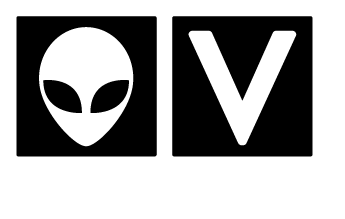Q: I understand that Digital Guardian's on-demand Data Visibility Study is designed to tell clients whether their customer information, employee and financial data, intellectual property, and trade secrets are at risk or well-secured. Tell me how that works.
Ken Levine: The Digital Guardian Visibility Study is a service that's appropriate for virtually every organization with proprietary or regulated data; it is designed to provide actionable intelligence on policy compliance, privileged user and insider activity, and potential targeted cyber-attacks. After just 30 days, organizations will get a detailed snapshot of how their sensitive data is being used or, in some cases, misused. The Data Visibility Study does not require any additional staffing, hardware, or consultant fees. This service offers organizations unprecedented clarity into every aspect of how their sensitive data is actually being accessed, stored, and used with respect to their unique policies and restrictions. Once deployed by Digital Guardian experts, our host agents begin immediately and continuously capturing secure event meta-data from multiple sources on host systems, including information on application use, network uploads, data access, printing, e-mail and webmail events, and all file operations that occur both on and off the network.
Completely deployed and managed by our security experts, the service records continuous and actionable data discovery, use, and compliance telemetry on workstations, laptops, and servers. The complete service is available to organizations in North America and the Europe.
The Data Visibility Study includes agent configuration, deployment, and management; secure storage of client event meta-data; continuous activity monitoring on or off the network; risk alerting and trending analysis; detailed event forensics; self-service portal with a reporting dashboard of common data risks; and professional services consulting and 24x7 support.
You should note that no sensitive content is transmitted or stored as part of the service. Digital Guardian logs actions as meta-data that recreate any event in its proper context with forensic accuracy. To assure sufficient tamper resistance, event meta-data are encrypted, hashed, and digitally signed before being securely transferred to Digital Guardian's hosting facilities from anywhere in the world via Digital Guardian's FIPS 140-2 certified protocol.
Q: One of your recent blogs says that breaches are inevitable but sensitive data loss isn't … and that you recommend thinking like an attacker to keep your data safe in the face of a breach. How does one think like an attacker?
Levine: "Thinking like an attacker" is not a new concept – it's a different way of describing threat modeling. Threat modeling helps us set policies that protect the data from malicious actions.
From an attacker's point of view, it's a target-rich environment -- they can attempt direct assaults on corporations' infrastructure, try to exploit common vulnerabilities in Web applications or popular programs, or target employee log-in credentials. Identifying your most commonly targeted attack vectors and the points of weakness in your infrastructure is key to building a proper defensive strategy. Common points of weakness in organizations include unregulated mobile devices, unpatched workstations that are running vulnerable applications, programs and/or operating systems, and employees who lack proficient security education, such as how to recognize spear-phishing e-mails and social engineering attacks.
It's not enough to assume that a perimeter defense will keep attackers out. You need to start with the assumption that some adversaries will be successful in their attempts to bypass your initial defenses – a successful strategy is implementing a layered security approach, with an emphasis on protecting both the network and endpoints to prevent attackers from moving deeper into your infrastructure after bypassing initial points of entry.
Q: Mark Stevens, your VP of global services, gave a speech about law firms being one of the top targets for cyber criminals. Who are other top targets and do you suggest different advice for them than you do for other clients?
Levine: Any organization with sensitive data is a target for cybercriminals or advanced threat actors. Sensitive data can vary depending on the organization, but examples include intellectual property, source code, trade secrets, customer and employee personal identifiable information, account numbers, financial credentials, pending M&A contracts, access tokens, and passwords. Attackers will quickly turn the stolen data into a profit by reselling it to interested third parties, whether that be in the cybercriminal underground or to competing organizations.
Organizations need to understand where their sensitive data is at all times while having complete visibility and control over who's accessing it and where it's traveling. This will enable organizations to perform risk assessments across their IT infrastructure, including their physical, virtual, and mobile environments. Risk assessments will provide organizations with the insight needed to protect their critical IT assets and sensitive data while hardening any points of weakness.
Q: As a Platinum-Plus Sponsor of Black Hat USA 2015, what will be your focus at the conference? What will be the takeaways for attendees who listen to what Digital Guardian has to say there?
Levine: Digital Guardian will be showcasing its latest version of the Digital Guardian Endpoint Security Platform which provides data aware security designed to stop data theft. The platform performs across traditional endpoints, mobile devices, and cloud applications to make it easier to see and stop all threats to sensitive data. It can be deployed on premise, as a managed service or a hybrid of both. The latest version offers the most complete form of data protection by providing constant visibility to all sensitive data, a contextual understanding of actions that can put data at risk, and control over what actions can be taken with the data by each user or process.
New features included in the Digital Guardian platform include:
- Deep visibility. Operates deep within the OS to constantly monitor or control every system and data event simultaneously.
- Risk intelligence. Raw visibility alone is not enough to protect data against determined adversaries. Digital Guardian intelligently analyses and interprets the risk of every action before it can take place.
- Event examination. Intelligent context and comprehensive forensics provide a full narrative of an attack.
- Adaptive protection. Intelligently enforces more restrictive controls to sensitive data when threatening behavior is detected on the device.










